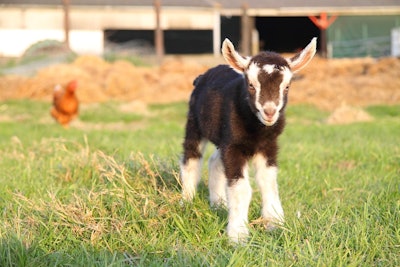
The first case of highly pathogenic avian influenza (HPAI) in domestic livestock in the United States during the 2022-24 HPAI outbreak has been confirmed.
The World Organisation for Animal Health (WOAH) reported that neonatal goat kids on a farm in Stevens County, Minnesota, had been showing unusual neurological signs. That same farm was the site of a backyard poultry flock infection, which was confirmed by the United States Department of Agriculture (USDA) Animal and Plant Health Inspection Service (APHIS) on February 27.
According to the WOAH report, the goats on the premises shared the same pasture and sole water source with ducks and chickens that were infected with HPAI. The goats on the farm began to kid just days after the birds on the property were depopulated.
Samples from the sick goats were tested at the USDA National Veterinary Services Laboratories, which confirmed the presence of an H5N1 variant of HPAI in the goats. Ten goats were affected, five of which died. There were 165 susceptible goats on the farm.
Control measures put in place included quarantine, surveillance within a restricted zone, disposal of carcasses, byproducts and waste, and disinfection.
While this is the first case of HPAI in U.S. goats during the 2022-24 outbreak, other species of mammals have been affected, including coyotes, cats, opossums, gray seals, bobcats, striped skunks, tigers, harbor seals, racoons, pumas, bottlenose dolphin, bears, foxes, leopards, fishers, otters, American martens and squirrels.
According to WOAH standards HPAI infections of backyard poultry, wild birds or mammals should not have an impact on international poultry trade.
To learn more about HPAI cases in commercial poultry flocks in the United States, Mexico and Canada, see an interactive map on WATTPoultry.com.
View our continuing coverage of the global avian influenza situation.


















